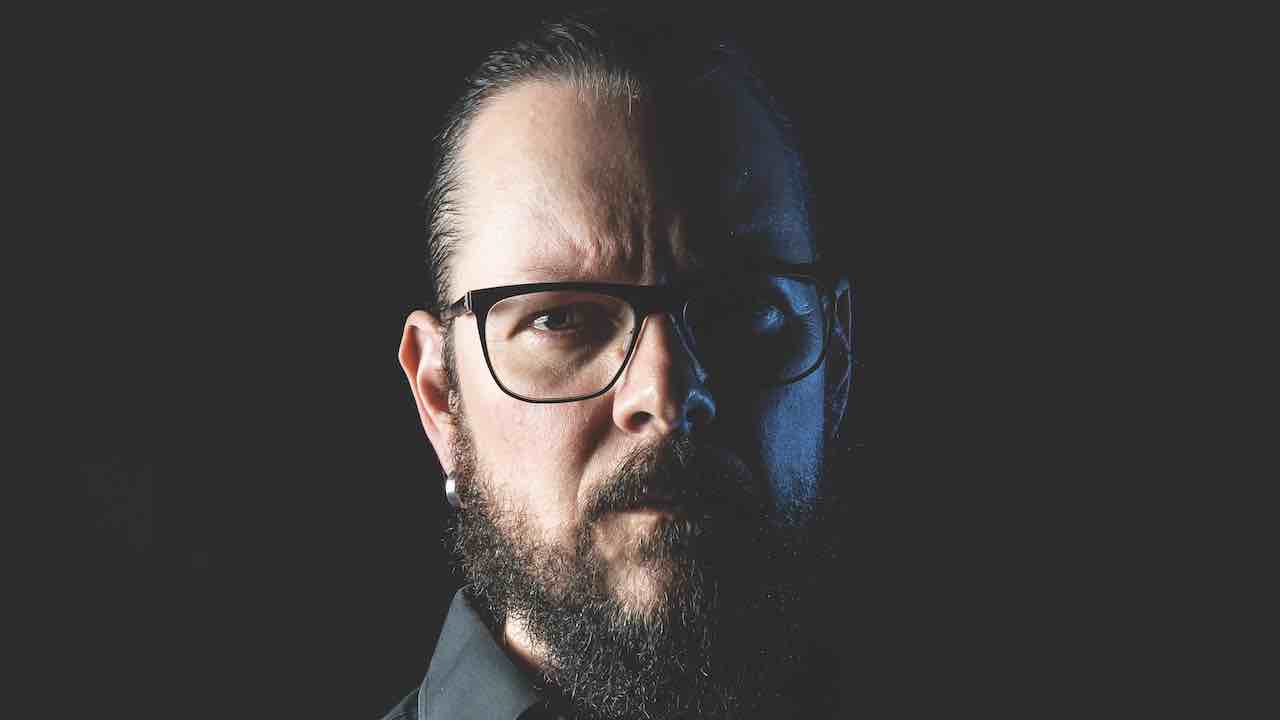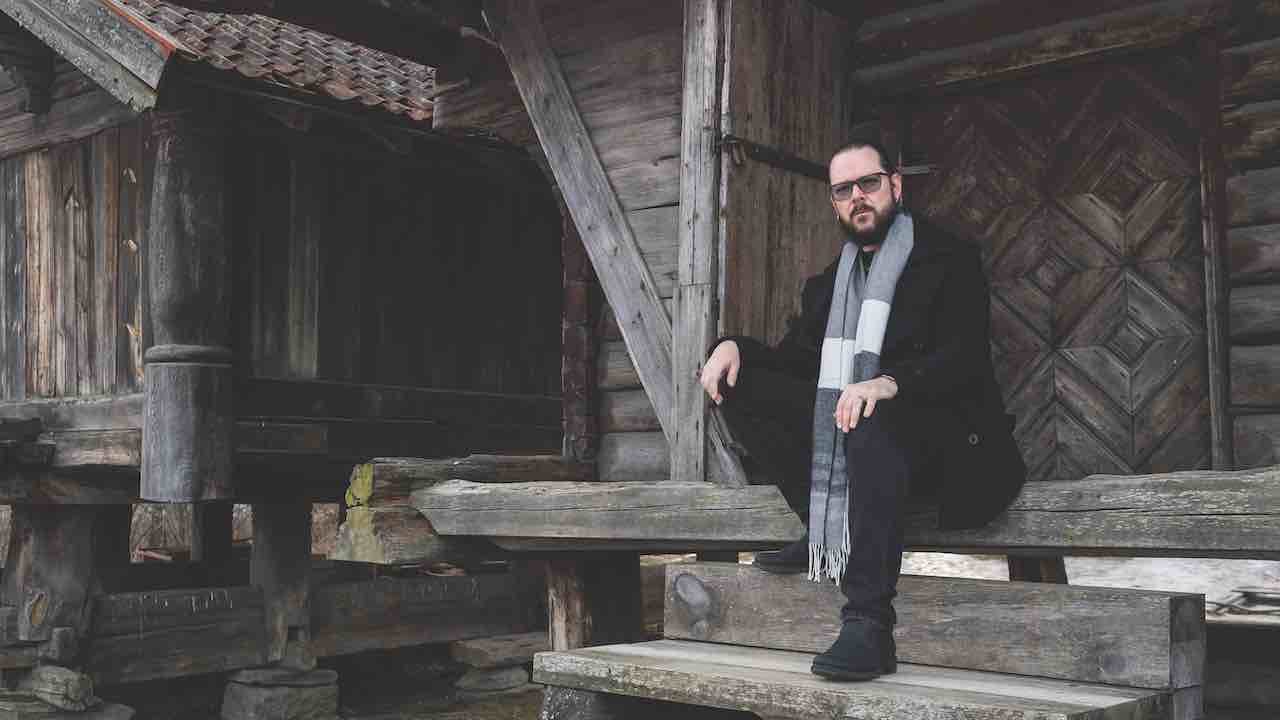Ihsahn: why a black metal visionary has gone back to his roots
We join Emperor frontman Ihsahn at home in Norway to find out why he’s finally reconnected with black metal

If you enter Norway’s Telemark region, you’ll get murdered. That was what mapmakers were told in the 1600s, when they wanted to plot its terrain. And that was the grisly fate of some unlucky outsiders who dared to visit.
“There was this old-school B&B run by an old lady, and no one came out, and they found all these corpses in the mire behind it because she’d apparently killed everyone,” explains Ihsahn, leaning forwards conspiratorially like a campfire storyteller. “I’m not sure if it’s true, but it goes to describe some of that strident nature. And that very self-contained, hard-to-open-up kind of spirit. I associate that with black metal as well.”
Identity is a tricky thing to pin down. Ihsahn’s new EP, Telemark, is about identifying with the take-no-shit ethos of his geographical predecessors. But it also sees a return to the black metal of his Emperor days, reflecting his own upbringing, musical development and the man he is today. Which is why we’ve come to his hometown of Notodden, to risk seeing Telemark for ourselves.
We arrive at Juke Joint Studio in the early evening, after a dark, two-and- a-half hour drive southwest from Oslo airport. So far, so safe. Ihsahn greets us at the door dressed in a black shirt and jeans, the standard uniform of a metal elder statesman, and ushers us inside. He presents us with a box of Melkehjerter milk chocolate hearts, Norway’s signature confectionery product, before lovingly showing us the beautiful analogue desk from the legendary Stax Records. It’s rumoured to have been used by Aretha Franklin and Elvis Presley, and was originally shipped over by US blues musician Seasick Steve.
- Into The Dark: Emperor - Black Metal's Most Important Band
- Emperor: the story behind I Am The Black Wizards
- The 10 best True Norwegian Black Metal bands
- 10 essential post-black metal albums
Ihsahn used this equipment to record his first solo album, 2006’s The Adversary. Since then, he’s released six more full-length records, increasingly leaning into the avant garde and melodic rock. Telemark came about because Heidi, his wife and musical co-conspirator of 22 years, had long been challenging him to revisit black metal – and to sing in Norwegian for the first time.
“I think sometimes she thinks I go too far, like I try to be a pop musician!” he laughs. “I resisted it for a while, because I was thinking of a full album, and I think that would be far too boring. But in a specific project like this about Telemark, there were so many interesting dots to connect.”
Heidi suggested three titles: Stridig (Strident), Nord (North) and Telemark. But before Ihsahn started writing the songs, he chose two English-language covers to sit alongside them: Iron Maiden’s punkish Wrathchild and Lenny Kravitz’s groovy Rock And Roll Is Dead. Incongruous at first glance and a world away from 90s black metal, they set the stage for the independent attitude and authentic sound he hoped to capture.
Sign up below to get the latest from Metal Hammer, plus exclusive special offers, direct to your inbox!
“I wanted this to be very old-school, I wanted it to sound like one band ensemble in a room, and both the Wrathchild song and the Lenny Kravitz song have that kind of bare-bones, rock’n’roll sound to them,” he explains. “So that kind of set the sonic scene to work from. I wrote the entire EP for that ensemble – drums, bass, two guitars and screaming vocals and a brass section. It was kind of simple, you know? And then singing in Norwegian added an element of excitement and surprise.”

All three original songs are intense, driving, frostbitten anthems that nod to Emperor’s heartland, but are executed with the progressive flair and slick production Ihsahn’s become known for. The title track even incorporates folk melodies, filtered through blastbeasts and windswept screams, ending with the dramatic, yearning declaration: ‘Telemark!’
Lyrically, they express the “strident nature” of the Telemark people that comes across in his anecdotes about the cartographers and the murderous woman. There are references to traitors, the national anthem, a tempting female siren called a Hulder, and a troll who trapped his wife in the mountains – all wrapped up in visions of winter.
“Because I started going back to my musical roots, it made sense to build my geographical roots into that,” he reasons. “At all the Emperor shows, we were introduced as: ‘From Telemark, Norway: Emperor.’ Even our live shows today are introduced like that. So we’ve always had this kind of strong connection to this area, for some reason, and now that I’m older I’ve really grown attached!”
This strong, local character is something Ihsahn only became aware of once he started travelling. Only by being exposed to other cultures could he come to understand his own. It’s something he explored on My Heart Is Of The North, from 2016’s Arktis: ‘I have felt the hunger, the restless howling call, to lift my gaze across the seas, to seek out foreign shores / Yet for all riches, they may bring forth, the undeniable remains, my heart is of the north.’
“Everywhere I go, I meet people who also love Iron Maiden and Judas Priest, so it’s like cultural common ground – metal is a global thing, and we all know how to relate to and behave around that music,” he explains. “But everything else is like a bonus. When you go to Japan, the culture and the way people relate to each other is different. And of course you notice that reflecting your own kind of social heritage in a way. You get to know notice peculiarities that you won’t notice when you’re in your own environment. It’s like me meeting French people. I’m like, ‘Don’t fucking kiss me!’ Ha ha ha, I’m just kidding.”
Ihsahn’s clear that Telemark’s about a regional, spiritual kinship rather than bloodlines and family history, but it’s impossible to talk about the EP without acknowledging his background. Ihsahn, real name Vegard Tveitan, was raised on a farm in Notodden. When he was a child, his grandfather would spin wild yarns about trolls, casting himself as the hero.
“He sort of made you believe that stuff, so I still have these images in my mind of my grandfather fighting trolls!” he chuckles. “You don’t really think of those stories as part of your cultural heritage, because no one really reflects on that to start with. But it kind of adds up when you start looking back and connecting it with other things. When you develop a more conscious reflection on it.”-
When he wasn’t reluctantly babysitting his brother, eight years his junior, Vegard was obsessing over music. He had started piano lessons when he was six years old, got a guitar four years later, and would record demos on a four-track using the set rhythms on an electric organ. Luckily for him, he had no neighbours and could play as loudly as he wanted. His first album was Kiss’s Rock And Roll Over, he got “really into” Twisted Sister, and will never forget the night of October 5, 1988, when his dad took him to see Iron Maiden.
“They were like gods,” he marvels, casting his mind back to age 13. “And that was kind of part of the experience. Bruce Dickinson, the lights went on, the pyro went off – Moonchild! He was jumping onstage. There were 5,000 other people there, we’re breathing the same air. And that is what art is like, and that is what music can make you feel. It makes you connect to something otherworldly. I could imagine it’s a similar appeal to what religious people feel.”
By the time he was in Emperor, he felt trapped in Notodden. Here he was, in a band making abrasive music for an exclusive underground crowd, sporting long black nails, inverted crosses, spikes and a leather coat. The town misfit. “We really wanted to get away. [Guitarist] Samoth lived half an hour from here, so in this town I was the only one doing that style,” he explains. “I was like the ‘infected fox’ - the sickness that foxes get, where they lose their fur. That’s a Norwegian expression. It’s like an outcast. But probably all, you know, self-inflicted!”
Nevertheless, as Ihsahn mentioned earlier, the band were introduced as: ‘From Telemark, Norway: Emperor.’ They invoked tradition, even if they didn’t understand the weight of it yet, just as they used the imagery of the dramatic landscapes on their doorstep without feeling a particular bond.
“In the early artwork of Emperor, there were always big forests and the full moon. This is something that we all saw around us. But this was the romanticised, larger-than-life version of it,” he explains. “As time goes by, you feel more and more attached to that. I didn’t really have eyes necessarily for the bigger picture. But you will see that tomorrow – just watching the outside, and the lake here, and forests and everything, you will see where it comes from.”

At 9.30am the next day we meet Ihsahn at Heddal open-air museum, a collection of traditional farm buildings on a hill. It’s the first time we’ve seen Telemark in the daytime, and we can see what he means. The sky is blue and an eerie, pale yellow light streams through the clouds, illuminating thick sheets of ice on the ground. The air is crisp and still, and trees darken the horizon. Ihsahn points to a wheel at the bottom of a cabin – at the family farm, his grandfather would make him sharpen tools on one just like it. “I hated it!” he laughs.
Down the hill is Heddal stave church, its striking tiered outline and wooden panelling familiar from photos of black metal arson attacks on similar structures in the 90s. Though this one remained untouched, and Ihsahn wasn’t involved in the wave of vandalism, he casually mentions that armed townspeople gathered to defend it from him. He was only 16; it must have been a weird experience.
“It was totally understandable,” he says. “It was the beginning of that black metal thing, it was very, very… shocking, I think, because it was a very extremist movement in many ways, and people did not see that coming.”
We wander over to an information board depicting a man in the Telemark Bunad, traditional Norwegian dress. Ihsahn recently wore the costume for Telemark’s promo pictures, and between this and lyrics about the national anthem, he’s quick to dismiss any notions of nationalism. He remains thankful, though, to have grown up in a country that supported his passions – even when those passions were controversial.
“Someone recently asked if I was proud to be Norwegian, but I just feel very, very at home,” he says. “There’s this deeper sense of longing. It’s not like it’s better than anywhere else, but over the years I’ve developed a sense of gratitude. I heard this interview with Tobias [Forge] from Ghost, mentioning how he also was so ‘after the fact’ grateful for coming from a country that allows you to think, ‘I want to be a musician.’ We have a mixed economy and a very, very strong social security system.”
When we ask if there’s a reason Ihsahn’s written Telemark now, he suggests it’s related to that acute sense of longing for home, which he feels when he’s on tour. “There’s a really strong pull. Obviously most important to my family, but also just that sense of belonging,” he explains. “I think that is something that may come a bit with age as well – everything else that seemed more exciting, the grass was always greener, you’re kind of past that.”
Ihsahn, Heidi and their son and daughter live two minutes from the farm where he grew up. When he’s not away, he’s working on new music or teaching the next generation of guitarists above Juke Joint Studio. His grandparents are laid to rest in the small cemetery of Heddal stave church. Telemark is where Ihsahn’s always lived, and it’s where he helped create a whole new genre of music. It has its folklore, but so too does black metal, and Telemark is perhaps more autobiographical than it first appears.
In January 2020, Norwegian authorities combined Telemark with Vestfold to form the new Vestfold og Telemark county, redrawing the map. Ihsahn is griping about it. Emperor have a history of using Telemark’s axe crest, and it made him happy to look out for the road signs on his way home from a trip. Still, he can’t fully rationalise exactly why it bothers him so much. After all, identity is a tricky thing.
“It’s a political, structural thing where they kind of share administration, but they also changed the signs to combine the two,” he explains. “I have no political or practical attitude towards it, I don’t know yet, but it just feels wrong! I live in Telemark, and nothing’s going to change that!”
Published in Metal Hammer #334. Telemark is out now

Eleanor was promoted to the role of Editor at Metal Hammer magazine after over seven years with the company, having previously served as Deputy Editor and Features Editor. Prior to joining Metal Hammer, El spent three years as Production Editor at Kerrang! and four years as Production Editor and Deputy Editor at Bizarre. She has also written for the likes of Classic Rock, Prog, Rock Sound and Visit London amongst others, and was a regular presenter on the Metal Hammer Podcast.
